Related Research Articles

Highland is a council area in the Scottish Highlands and is the largest local government area in the United Kingdom. It was the 7th most populous council area in Scotland at the 2011 census. It has land borders with the council areas of Aberdeenshire, Argyll and Bute, Moray and Perth and Kinross. The wider upland area of the Scottish Highlands after which the council area is named extends beyond the Highland council area into all the neighbouring council areas plus Angus and Stirling.
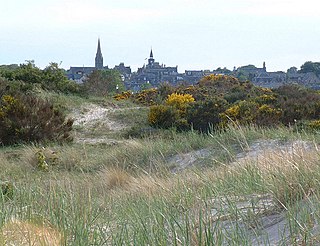
Nairn is a town and former royal burgh in the Highland council area of Scotland. It is an ancient fishing port and market town around 17 miles (27 km) east of Inverness, at the point where the River Nairn enters the Moray Firth. It is the traditional county town of Nairnshire.
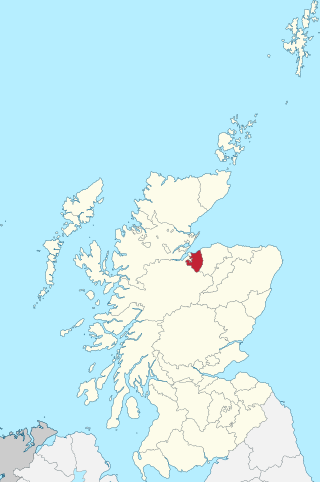
The County of Nairn, or Nairnshire, is a historic county, registration county and lieutenancy area of Scotland. The county was named after Nairn, its only town. The county was used for local government until 1975 when the area was redesignated as the Nairn District, one of the eight districts of the two-tier Highland region. Nairn district was abolished in 1996 when Highland became a single-tier council area.

Caithness, Sutherland and Easter Ross is a constituency of the House of Commons of the Parliament of the United Kingdom (Westminster). It is the most northerly constituency on the British mainland. It elects one Member of Parliament (MP) by the first-past-the-post system of election.
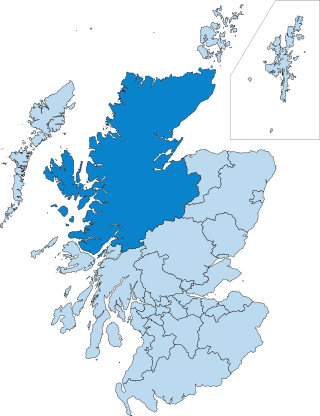
The politics of the Highland council area in Scotland are evident in the deliberations and decisions of the Highland Council, in elections to the council, and in elections to the House of Commons of the Parliament of the United Kingdom (Westminster) and the Scottish Parliament (Holyrood). In the European Parliament the area was within the Scotland constituency, which covers all of the 32 council areas of Scotland.

The Highland Council is the local authority for Highland, one of the 32 council areas of Scotland. The council is based at the Highland Council Headquarters in Inverness.

Inverness and Nairn is a constituency of the Scottish Parliament (Holyrood) covering part of the Highland council area. It elects one Member of the Scottish Parliament (MSP) by the first past the post method of election. It is also one of eight constituencies in the Highlands and Islands electoral region, which elects seven additional members, to produce a form of proportional representation for the region as a whole.

Andrew Egan Henderson Hendry, known as Drew Hendry, is a Scottish National Party (SNP) politician who served as Member of Parliament (MP) for Inverness, Nairn, Badenoch and Strathspey from 2015 until 2024, when the seat was abolished. Hendry served as the SNP's Economy Spokesperson in the House of Commons from September 2023 to May 2024.
The 2017 Highland Council election was held on 4 May 2017 to elect members of the Highland Council. The election used the 21 wards created under the Local Governance (Scotland) Act 2004; each ward elected three or four councillors using the single transferable vote system. A total of 74 councillors were elected, six less than in 2012.

Cromarty Firth is one of the 21 wards used to elect members of the Highland Council. It consists of North of the Cromarty Firth, west of the Tain and Easter Ross ward
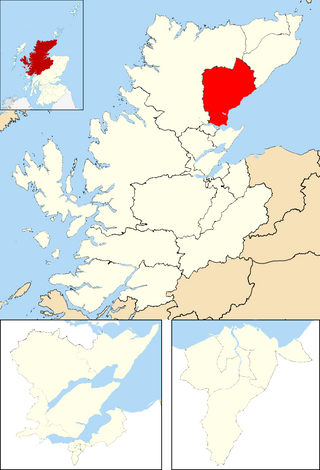
East Sutherland and Edderton is one of the 21 wards used to elect members of the Highland Council. It includes the towns and villages of Brora, Dornoch, Edderton, Golspie and Helmsdale. It elects three Councillors.

Tain and Easter Ross is one of the 21 wards used to elect members of the Highland Council. Between the Cromarty Firth and the Dornoch Firth and east of the Cromarty Firth ward, it includes the town of Tain and the Seaboard Villages. It elects three Councillors.

Aird and Loch Ness is one of the 21 wards used to elect members of the Highland Council. It includes Loch Ness, the town of Beauly, and the village of Fort Augustus. It elects four Councillors.

Culloden and Ardersier is one of the 21 wards used to elect members of the Highland Council. It includes the villages of Culloden, Ardersier and Smithton. It elects three Councillors.

Inverness Central is one of the 21 wards used to elect members of the Highland Council. It includes Dalneigh, Glebe, Haugh, Merkinch and South Kessock areas of urban Inverness. It elects four Councillors.

Inverness South is one of the 21 wards used to elect members of the Highland Council. It includes Cradlehall, Inshes and Westhill areas in or near urban Inverness, and the village of Tomatin, on the River Findhorn. It elects four Councillors.
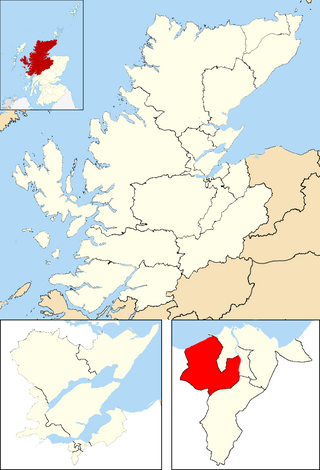
Inverness West is one of the 21 wards used to elect members of the Highland Council. It includes Kinmylies and Scorguie areas of urban Inverness, and a more rural area, west of the River Ness. It elects three Councillors.

Fort William and Ardnamurchan is one of the 21 wards used to elect members of the Highland Council. It elects four Councillors.
Wick and East Caithness is one of the 21 wards used to elect members of the Highland Council. This was a new ward in the 2017 election following boundary changes. It elects four Councillors.
Elections to The Highland Council were held on 5 May 2022, the same day as the 31 other Scottish local government elections. As with other Scottish council elections, it was held using single transferable vote (STV) – a form of proportional representation – in which multiple candidates are elected in each ward and voters rank candidates in order of preference.
References
- ↑ "2022 local government election results Ward 18 Nairn and Cawdor - declaration of results". Highland Council. 6 May 2022. Retrieved 13 May 2024.
- ↑ "2022 local government election results Ward 18 Nairn and Cawdor - candidates votes per stage". Highland Council. 6 May 2022. Retrieved 13 May 2024.
- ↑ "2017 Highland Council election results".